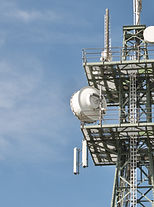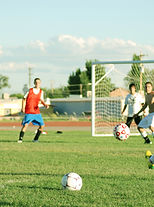Driverless Mowing Solutions
This page compares autonomous mowers with Havenshine's Sidekick solution. Learn the pros and cons of each approach to make an informed decision when investing in your next driverless mower. The content on this page was written for professional landscapers who maintain large commercial spaces like public parks, colleges, schools, and athletic fields.
Feature
Autonomous Solutions like Hero
Sidekick Driverless Solution
Operating Principle
Typical use
Price
($)
Warranty and Support
(for driverless system)
Ideal Worksites
Typical use
Benefits
Typical use
Safety Systems
(Default package for use in public areas)
Navigation Quality
(On a flat field at 6mph)
Compatible Mowers
(Reach out to inquire about other options)
Operate in Tall Grass
(ex. where some weeds are more than 10 inches tall)
Mow under bushes and soft tree branches
(ex. under willow tree)
Detect changes to worksite and adjust path plan
(ex. detect moved bench or newly-planted garden)
Operate without RTK or cellular connection
(ex. during outage, in deep shade, in urban canyons, outside of US)
Detect holes and wet ground
(ex. holes due to construction)
Operate in Busy Public Areas
(such as parks, schools, and downtown areas)
Autonomous
Follows a pre-defined path plan. Can store unlimited number of path plans.
$10 per hour
With usage of 1000 hours per year over 5 years. Havenshine Hero solution costs $50,000.
5-year limited warranty
Pricing includes unlimited path plans and white-glove setup.
Not busy and unlikely to change overtime
Fenced ball diamonds, parks, athletic fields, remote areas.
Run in harsh environments
Human operator can supervise mower from truck or building during rain, wind, or extreme heat. Can run at night.
3D LiDAR, AI cameras, Safety Bumper
Supervised using SIL2 Wireless E-Stop Switch.
< 3cm
Quality will be affected by slopes, bumps, and other conditions.
Mean Green 52" to 96"
Stand-on and riding mowers are supported.
NO
Safety systems will see false positives.
NO
Safety systems will see false positives.
NO
But mixed results
Some large obstacles like soccer goals can be detected in the future, but the industry is far from detecting sprinkler heads and mulch beds. Dynamically replanning path remains a difficult and incomplete solution.
generally, NO
Most commercial mowers will stop when they lose RTK corrections due to the required navigation precision.
generally, NO
Most autonomous mowers will struggle to detect a hole in the ground and may fall into it. Most autonomous mowers will get stuck in wet ground.
Only if Supervised
Autonomous mowers can work in busy public areas but require special attention and a lot of supervision, which can reduce the productivity of operator.
Tethered
Follows a manual mower operated by a human.
$6 per hour
With usage of 1000 hours per year over 5 years. Havenshine Sidekick solution costs $30,000.
5-year limited warranty
For all components of the Sidekick system.
Any large flat worksite
Parks, schools, very large areas. Worksites that change regularly.
Human-level reliability
Since the operator is close to the driverless mower, both safety and navigation have human-level reliability.
3D LiDAR
Supervised using enabling switch installed on manual mower.
< 5cm
Quality will be affected by slopes, bumps, and other conditions.
Mean Green 52" to 96"
Can use a non-Mean-Green mower as the manual mower.
YES
With close-range human supervision.
YES
With close-range human supervision.
YES
Operator can detect changes to the worksite and easily adjust the path of the Sidekick mower.
YES
Sidekick has an ability to localize itself against the human-operated mower. With human supervision, it can operate without RTK corrections.
YES
Most operators can easily detect holes and flooded areas, and avoid them.
YES
The Sidekick mower is always supervised by design.
Autonomous Mowers - Do They Work?
Autonomous mowers can help you dramatically increase efficiency by giving you more time to focus on detailed work. They give you superpowers! They can run at night, in the rain, in heat, in cold, and in windy conditions. They don’t suffer from heat strokes, bug bites, or back pain. The autonomous mowers can produce straight lines for 12 hours per day.
With that being said, let's discuss the elephant in the field: there is no such thing as a “fully autonomous mower”, not yet. That’s because every autonomous mower will encounter scenarios that it can’t handle without human intervention. Your goal is to minimize how much time you spend “helping” your autonomous mower. If you are spending too much time “helping” your mower, then you might as well cut the grass manually. To be more precise, you might as well use Havenshine’s Sidekick™! Before we discuss Sidekick, let’s first understand the most common scenarios in which your autonomous mower will fail and will ask for your help.
Most modern autonomous mowers navigate a predefined path-plan and rely on hyper-precise GPS technology called GPS-RTK. The autonomous mowers typically use on-board safety sensors like laser scanners (LiDARs), cameras, and ultrasound to detect obstacles and avoid collisions.

Tall and Thick Grass
If you attempt to run your mower in an area that has tall grass, or tall weeds, then your mower may see this vegetation as a dangerous obstacle and stop. If you are using a small robot mower (not a commercial ZTR mower), then your mower could also get stuck in tall grass.

Tree Branches and Bushes
If your worksite has low-hanging tree branches or bushes that grow over time, then your mower may struggle to avoid them. Most commercial mowers don’t have the intelligence necessary to differentiate soft branches of a willow tree from thick branches of a maple tree. If your autonomous mower does not know how to dynamically replan its path, then it will stop and wait for the operator.

Changes to the Worksite
When you create path plans for your mower, you should include all keep-out zones like trees, benches, soccer goals, drain holes, and so on. If a bench is moved or new flowers are planted, then you will need to recreate the path plans. Forgetting to recreate the path plans increases the chances of property damage and chance of mower getting “stuck” when it gets to the obstacle.

Cellular/RTK Connectivity Outage and Dead Zones
Most autonomous mowers require cellular connection. This connection allows them to receive GPS RTK corrections, access path-plans stored on the cloud, and interface with mobile apps. If you live in an area of spotty connectivity, such a rural or remote area, then your autonomous mower may experience regular problems.
If you live in a country that is not supported by your manufacturer, such as Mexico or Canada, then your mower will not have cellular connection and will not work. If your worksite has large areas of deep-shade, such as an urban canyon or a forested area with many tall trees, then your mower will have a difficult time getting a strong GPS RTK signal and may be unable to mow.

Holes
Potholes, cavities, or “negative obstacles” present a special problem for autonomous mowers. The sensors on most mowers detect obstacles above the ground but will fail to detect obstacles below the ground. If your worksite has potholes that were created by an animal, a construction worker, or by mud slide, there is a risk that the mower will fall into the hole and will not be able to climb out.

Soft Ground and Flooded Zones
Autonomous mowers will fail to detect soft and wet ground. If your mower ends up in soft ground, it may get stuck and will require your help to get out. Furthermore, when operated in soft ground, the autonomous mowers may leave muddy tire marks.

Busy Public Areas
If you deploy an autonomous mower in a busy public area, such as a popular athletic park, or a city downtown area, then the mower will require some form of supervision. Failing to supervise your mower could have some unintended consequences:
1. Toys, Water Bottles, and Rocks: Busy public areas are more likely to have things left at the worksite such as scooters, baseball bats, water bottles, glass bottles, backpacks, rocks used as soccer goals, and so on. Even when the robot detects a dangerous obstacle like glass bottle, it will not be able to remove it.
2. Theft and Vandalism: If you deploy an autonomous mower in a high-crime area or a busy area, then your autonomous mower can be stolen or vandalized.
3. Injuries: unfortunately, there is no autonomous mower that’s 100% safe and can’t cause injuries. The busier the worksite is, the higher the chance of accidents. As a rule of thumb, you should always try to deploy your mower during times when people are least likely to be present at the worksite.

Huge Areas
Some worksites are so big that supervising the autonomous commercial mower is very difficult. Human supervision becomes impossible on a highway median, on a large military base, or on a typical airport.
Sidekick - Human-Level Reliability
Despite all the failure modes described above, here is the good news: just because your worksite is not compatible with autonomous mowers, it doesn’t mean you can’t use Sidekick. Sidekick is not an autonomous mower! Sidekick follows a human-operated lead mower. With Sidekick, all the issues described above disappear.
-
You can operate Sidekick in extra tall grass.
-
You can run Sidekick through bushes and low hanging tree branches.
-
Sidekick does not follow a path plan. It follows your manual mower. You don’t need to spend time defining a perimeter and keep-out-zones. Whenever the worksite changes, you don’t need to spend time adjusting perimeter or keep-out-zones.
-
Sidekick can operate without GNSS RTK or cellular connection. You can run Sidekick in rural areas. You can export Sidekick to any country in the world, and it will work there.
-
Due to close-range supervision, you can easily prevent Sidekick from falling into potholes or getting stuck in soft ground.
-
You can use Sidekick in busy public areas such as public parks, playgrounds, and even elementary schools.
-
With Sidekick, you can detect and remove small obstacles like glass bottles, toys, and rocks. You don’t need to leave a mess at the worksite, you don’t need to leave uncut patches of grass, and you don’t need to ask the operator to walk for 20 minutes to remove the obstacle. With Sidekick, you can remove the obstacle in less than 10 seconds!
-
When you operate Sidekick, the risk of theft and vandalism is substantially reduced. That’s because there is an operator present at close range to make sure that no one touches the Sidekick mower.
-
You can use Sidekick in large parks, in airports, on highway medians, and on other large worksites.
Sidekick helps you dramatically increase efficiency without sacrificing oversight.
In summary, we recommend deploying commercial autonomous mowers in locations that are unlikely to have people during the mowing operation and unlikely to change overtime.
For everything else, there is Sidekick™!